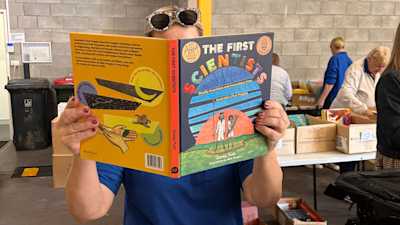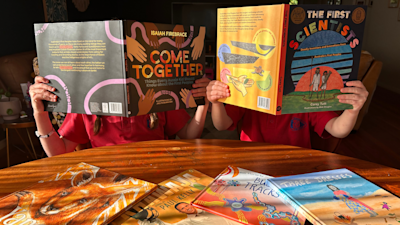Joe's experience highlights the common challenges faced by children and young people in out-of-home care when it comes to accessing quality education.

Image: A young child is wearing a yellow jumper and holds a ball and mitt. An adult support worker is with him. They are outside on a field.
Joe's Experience: A Challenging Journey
Joe* is a 12-year-old boy, who identifies as Aboriginal, in his first year of high school. He has a kind and exuberant nature and is well-liked by those around him. However, due to his history, Joe sometimes exhibits challenging behaviour that can be difficult to manage. He also has difficulty with speech and has received various diagnoses.
Initially, Joe attended a small primary school that made several adjustments to support his learning and engagement, although the success of these accommodations varied. When Joe transitioned to high school, he encountered immediate difficulties. In the first week, he was caught vaping, and in the second week, he was involved in an altercation with another student. Despite efforts from the staff at Life Without Barriers, his care provider, to advocate for him, Joe was eventually expelled from school.
Under the Australian Disability Standards for Education 2005, Joe's diagnosis should have offered him greater protection and support. However, the school at the time was unable to understand Joe's trauma background and provide the necessary support. They viewed his behaviour as violent and anti-social without considering the underlying factors contributing to it. The lack of understanding from both the school and the parent and student community resulted in Joe being labelled as "naughty" and "aggressive".
Joe's expulsion exemplifies the challenges and shortcomings of education policies that can hinder the support of young people like him who have experienced trauma. To create a different outcome for Joe, it is crucial for child protection and education systems to collaborate effectively with carers and case managers. This requires developing co-created education plans that incorporate the voice of the young person and are supported by the school and teaching staff. Such plans should be trauma-informed and equipped to address the behaviours resulting from trauma, rather than resorting solely to disciplinary measures.
In Joe's case, the school's response to his behaviour was limited to discipline, which ultimately led to his expulsion, the breakdown of his placement, and further disruption in his life. It is essential for all those involved in supporting the education of children and young people in OOHC to recognise that "all behaviour is communication."
By crafting empathic responses that consider the underlying factors and respond to trauma, positive life outcomes can be enhanced, attachment can be built, and trauma-informed practices can be implemented.
The Impact of Collaboration and Inclusive Education
Joe's case underscores the importance of collaboration between child protection systems, educators, carers, and case managers to ensure the educational success of children in out-of-home care. A coordinated approach that involves co-creating education plans, considering the voice of the young person, and implementing trauma-informed practices is crucial. In Joe's situation, a disciplined response to his behaviour without considering the underlying trauma factors led to his expulsion, placement breakdown, and further disruptions in his life.
Life Without Barriers emphasises the need for inclusive education that addresses the unique needs of children and young people in care. By providing reasonable adjustments, tailored teaching and learning strategies, and trauma-informed practices, educational institutions can empower these individuals to reach their full potential.
The Learning Without Barriers Strategy
Life Without Barriers' Learning Without Barriers Strategy for 2023-2025 focuses on several key areas to improve the education and learning outcomes for children and young people in care. The strategy aims to support children from early childhood through their post-compulsory school-age years. It emphasises the creation of supportive learning environments, increased attendance in early learning centres and schools, individualised education and learning plans, and partnerships with various organisations and stakeholders to influence systemic barriers.
You can read more about Learning Without Barriers here.
Joe's case study serves as a reminder of the challenges faced by children and young people in out-of-home care when it comes to education. Life Without Barriers' Learning Without Barriers Strategy aims to address these challenges and create inclusive learning environments that enable children and young people to thrive academically and personally. By working collaboratively and implementing trauma-informed practices, society can ensure that all children, regardless of their circumstances, have equal access to quality education and the opportunity to build a brighter future.
*Name changed to protect privacy.


